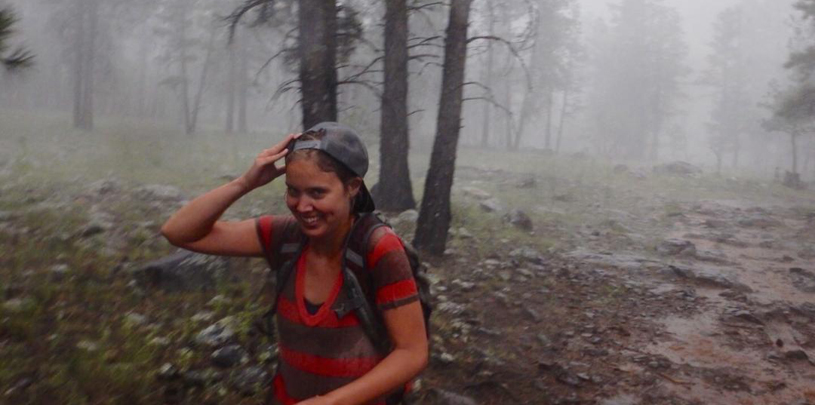
When the first raindrops strike, you’re happy for a break from the heat. But in a matter of seconds, the sporadic drops turn into a cold deluge. The ceiling of clouds, swollen with ammunition, hurls a steady stream of raindrops and hail at you, not to mention firing off cannons of thunder and 100 million volt lightning bolts directly overhead.
Monsoon season in the Southwest has arrived in all its fury, and each cloudburst is a reminder that the weather reigns supreme.
So what do you do when you’re stuck in the woods, surrounded by ponderosa pine lightning rods, and the number one tip for avoiding lightning strikes – get inside a building – isn’t an option?
Best option: If you’re close to your car, run!
Riding out the storm (pun intended) in your car is your best bet, but it’s not the rubber tires that will save you. Contrary to popular belief, rubber tires (or your Chaco sandals, for that matter) will not deter lightning – it’s actually the metal frame of the vehicle that conducts the electricity and directs it to the ground. Just be sure to sit with your hands in your lap and avoid touching any metal in the car.
If lightning strikes the car, you may see damage to the car body, as well as electronic systems. After the electrical current has passed through the vehicle into the ground, you are safe to exit the vehicle. Although, the best practice is to wait for the thunderstorm to pass before stepping out of your car.
In general, lightening follows the path of least resistance, which means that it often strikes the tallest object in the area. Stay away from open fields, ridgelines, and lone trees, heading towards a thick grove of small trees instead.
People who suggest getting to a low place, such as a ravine or valley, are not familiar with the idiosyncrasies of the Southwest. The ground, too dry to absorb the rainfall, sends excess water coursing through canyons, washes, and even forest service roads. Flash floods account for the greatest number of weather-related deaths each year, and six inches of fast-running water is enough to knock you off your feet. Climb out of canyons at the first sign of rain clouds. Instead, search for slight depressions in the ground, ideally in a forested area.
When lightning hits the ground, its electrical charge spreads along the surface and you run the risk of getting struck by ground current. The distance between contact points – your head and your feet if you’re lying down – is greater than the distance between your two feet standing up, increasing the likelihood of a ground current strike.
If you notice your hair standing on end, lightening is close. Hunker down in a crouched position, with only the balls of your feet touching the ground.
Be safe this monsoon season! Check the weather report before you head outside!